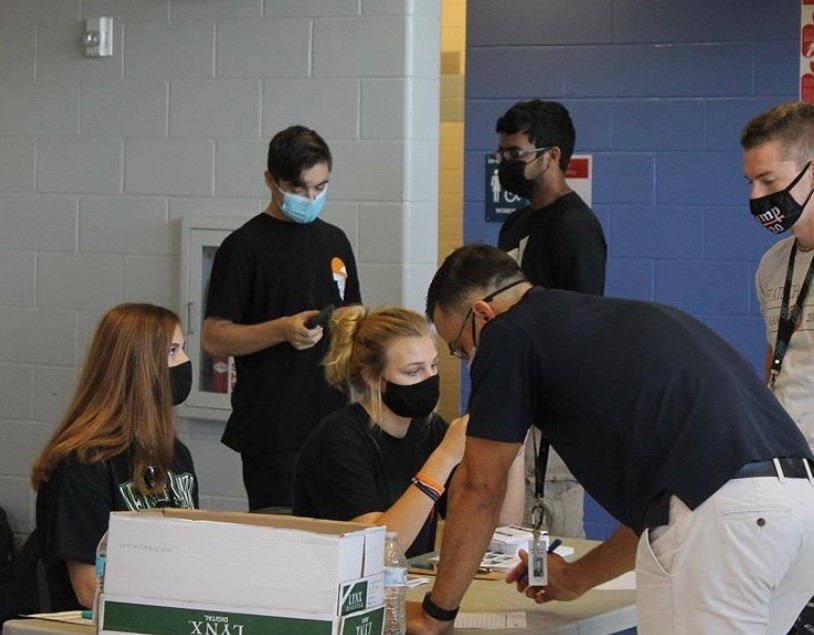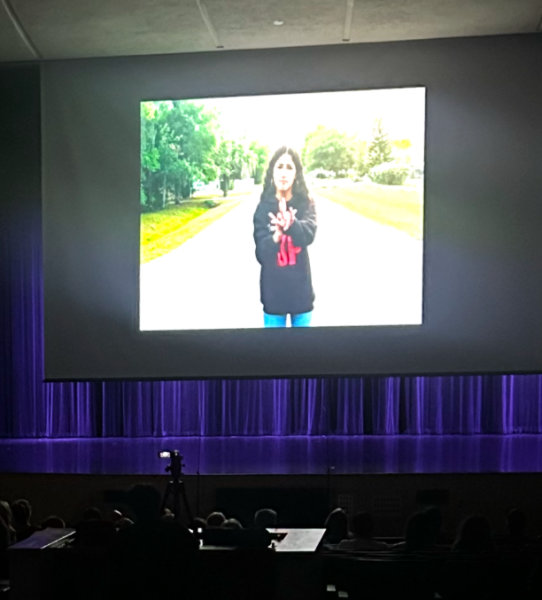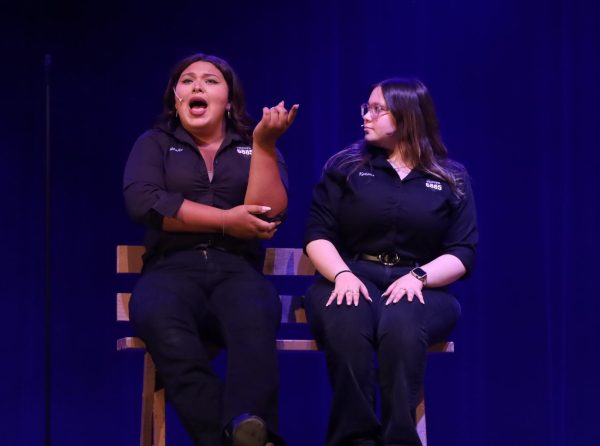An infusion of charity
photo by Jacob Hartman
Junior Julia Cioca is helping check donators in. She gave students their class pass and directed them to their waiting destinations.
OneBlood’s big red buses came to campus for student donations on Tuesday, Oct. 27. JROTC’s battalion commander, the highest ranking cadet, Jonah San Miguel took on the responsibility to direct and oversee the blood drive, such as managing sign-ups and advertisement. As battalion commander, he will organize all four quarterly blood drives.
San Miguel has never overseen an event like this before, so he relied on what he learned from previous battalion commanders and his own knowledge. He did not have a straightforward experience though, considering the extra safety regulations that had to be put in place.
“The idea to continue this project amidst a pandemic sounds better to me than under normal circumstances,” San Miguel said. “It provides those eligible to donate an opportunity to help actively fight the pandemic instead of being neutral and just sticking to masks and social distancing.”
JROTC leaders were satisfied with the 47 of students that donated during this blood drive. San Miguel personally tried to ensure that everyone knew the benefits of donating blood for those fighting COVID-19 and other diseases in the hospital, which he believes is the greatest motivation to donate blood.
Although they believe the event was a success, there were a lot of complications behind the scenes. They were unable to promote the blood drive as much as before, because of less opportunity than in previous years.
In addition to these issues, the blood drive company only sent two buses, which was not enough compared to the number of sign ups, which also made things take longer. The donation process took up to four hours longer since they were being more thorough amidst the pandemic, and the amount of people that showed up outnumbered the amount of available stations. This caused some students to wait as much as four hours and in some cases, not donate at all, such as senior Katie McClean.
McClean was unable to participate due to needle complications, but looks forward to attending the next time the event is held.
“Although this was my first time I would most likely do it again. I found out I have blood type O- which is most needed in hospitals,” junior Lindsey Engel said. “It felt good knowing I was saving people’s lives. I did have some complications during the process such as dizziness and nausea.”
Moving on, San Miguel wants to personally see to it that they will have enough buses for the next blood drive so the number of donations can be optimized. Even if the pandemic subsides after another blood drive or two, the need for blood donations will continue to go on.
“Besides assisting those suffering from COVID-19, we organize these blood drives often to save lives who may be suffering from rare or severe diseases or may have experienced traumatic and life-threatening incidents that require a blood transfusion to save their life,” San Miguel noted.
JROTC is planning to host the next blood drive in January, then two months later in either late March or April.
Your donation will support the student journalists of Hagerty High School. Your contribution helps us publish six issues of the BluePrint and cover our annual website hosting costs. Thank you so much!







